1. Minnesota Juicy Lucy
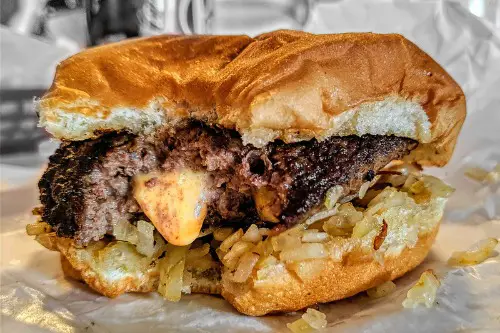
Minneapolis and St. Paul are home to the Juicy Lucy, a cheeseburger with cheese stuffed inside the beef patty instead of on top. Locals defend this invention as a brilliant twist on the classic burger, delivering molten cheese surprises with every bite. The exact origin is debated between two bars, each claiming to be the original. The Juicy Lucy is a must-have for burger lovers who want something uniquely Minnesotan.
This burger represents Minnesota’s quirky culinary identity—comfort food with a fun twist. For many locals, it’s not just a meal but a challenge to find the “best” Juicy Lucy, sparking friendly rivalries. The gooey, cheesy core embodies the state’s hearty, down-to-earth spirit. It’s a burger that invites sharing stories as much as sharing a meal.
2. New Orleans Gumbo
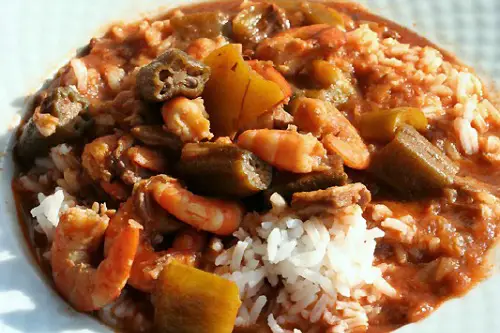
In New Orleans, gumbo is more than a stew; it’s a ritual that combines history, culture, and a blend of French, African, and Native American flavors. Locals get very specific about the “holy trinity” of celery, bell peppers, and onions, and whether the roux is dark or light. This dish is slow-cooked with seafood, sausage, or chicken, depending on family tradition, and served over rice. It’s comfort food that carries the soul of the city.
Every neighborhood seems to have its own secret gumbo recipe, making it a fiercely personal dish to protect. People often debate what the essential ingredients are or whether okra or filé powder is better as a thickener. Eating gumbo in New Orleans feels like connecting to generations past, which explains the almost religious fervor around the dish. It’s not just food—it’s a flavorful history lesson.
3. Philadelphia Cheesesteak
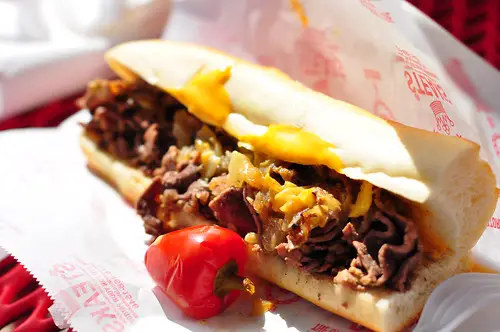
Ask a Philadelphian about cheesesteaks, and you might get a passionate, possibly heated, answer about the right bread, the cheese, and whether onions belong. This sandwich—thinly sliced ribeye with melted cheese on a hoagie roll—is the city’s culinary emblem. Locals argue endlessly over Pat’s versus Geno’s, two famous spots, and whether provolone, American cheese, or Cheez Whiz reigns supreme. For Philly residents, the cheesesteak is a point of pride and identity.
Cheesesteaks also embody Philly’s working-class roots, fueling generations of blue-collar workers and sports fans. The sandwich’s simplicity is what makes it iconic, but that simplicity is fiercely guarded, making any change or “improvement” controversial. To locals, it’s not just a meal—it’s a piece of their hometown’s heartbeat. You can tell when someone truly knows Philly by their cheesesteak preferences.
4. Kansas City BBQ
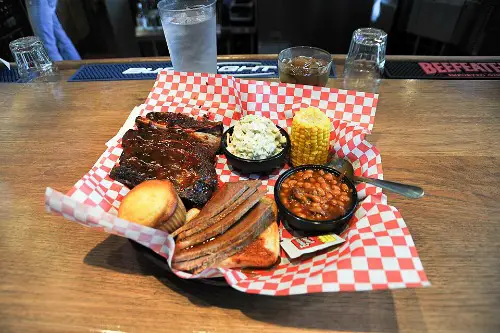
Kansas City is synonymous with barbecue, but it’s not just about smoking meat—it’s about the sauce. KC BBQ is famous for its thick, sweet, and tangy tomato-based sauce, and locals get serious about it. The city’s style includes a wide variety of meats, but burnt ends—the flavorful crusty tips of smoked brisket—are a standout that locals proudly defend. Barbecue competitions and festivals here fuel a friendly rivalry that only deepens locals’ love.
For KC natives, BBQ is a social event, a weekend tradition, and a way of life. The sauces and rubs are often family secrets passed down through generations. Whether it’s ribs, pulled pork, or burnt ends, each bite tells a story about the city’s dedication to slow-cooked perfection. Kansas City BBQ isn’t just food; it’s a community’s pride plated with smoky goodness.
5. Maine Lobster Roll
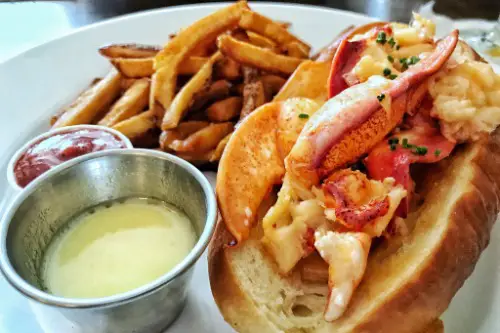
In Maine, the lobster roll is a summer obsession that locals fiercely protect from dilution or over-commercialization. Unlike some other coastal lobster rolls, the Maine version is typically served cold with mayo (or sometimes drawn butter) in a toasted, buttery bun. Residents emphasize freshness above all—lobster must be local and caught recently for it to qualify. It’s a simple dish, but one with high standards and deep roots in the state’s fishing culture.
Maine people will defend their lobster roll as not only delicious but as a vital piece of their heritage. It’s a celebration of the ocean’s bounty and a symbol of the state’s maritime economy. Tourists often flock to roadside shacks, but locals know the best rolls come from specific, sometimes hidden, spots. This regional pride turns every lobster roll into a little slice of Maine’s identity.
6. Cincinnati Chili
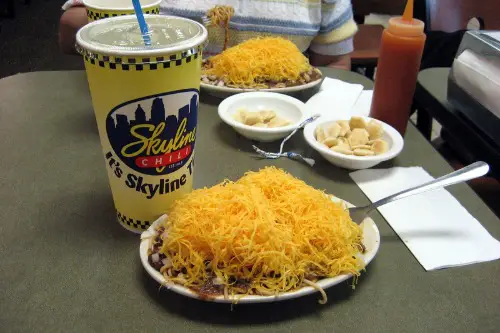
Cincinnati chili might confuse outsiders, but for locals, it’s a beloved comfort food with unique origins. Unlike traditional chili, Cincinnati chili is a spiced meat sauce served over spaghetti or hot dogs, often topped with a mound of shredded cheddar cheese. The dish reflects the influence of Greek immigrants and is known for its sweet and cinnamon-spiced flavor. Cincinnatians can argue for hours about how many “ways” to order it—like “three-way” or “five-way.”
This chili isn’t about heat or beans; it’s about a complex blend of spices that set it apart. For locals, ordering Cincinnati chili is a ritual with its own language, and every chili parlor claims their recipe is the authentic one. It’s a culinary tradition rooted in immigrant history and city pride, making it a treasured local staple. Outsiders might scratch their heads, but to Cincinnatians, it’s pure comfort.
7. New England Clam Chowder
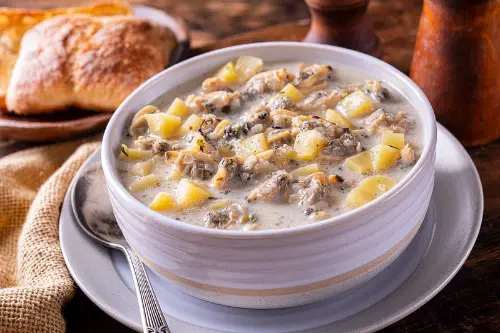
The creamy, thick New England clam chowder is a northeastern icon fiercely defended by locals who insist it should never be watery or tomato-based. Made with fresh clams, potatoes, onions, and cream, this chowder is rich and hearty, perfect for chilly coastal weather. In towns from Boston to Portland, debates about the best clam chowder spot can get surprisingly intense. For many, this chowder is the taste of home and salt air.
The chowder’s consistency and freshness of ingredients are non-negotiable in the eyes of locals. They often judge a place by how well it balances creaminess without overpowering the delicate clam flavor. To New Englanders, it’s more than a soup; it’s a winter tradition and a symbol of their maritime heritage. One bad chowder can ruin a day, which explains the passionate defense.
8. Tex-Mex Enchiladas
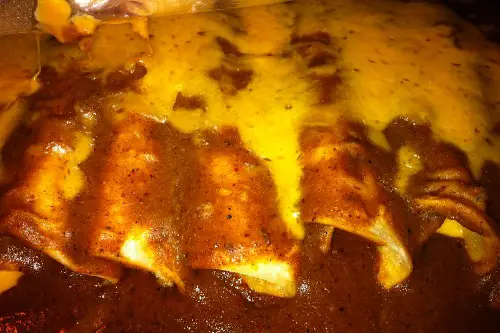
In Texas, enchiladas come with fierce regional pride, especially when it comes to the sauce. Unlike traditional Mexican enchiladas, Tex-Mex versions often feature chili gravy or a robust red sauce that’s thick, flavorful, and sometimes smoky. Locals debate corn versus flour tortillas and cheese types, but all agree that enchiladas are a must-have comfort food. This dish embodies the fusion of Mexican and Texan culinary traditions.
Texans view enchiladas as a personal and cultural statement, reflecting the state’s diverse history. They are often served with rice and beans, making the meal a full celebration of Tex-Mex flavors. The passion over enchiladas is about more than taste—it’s about honoring the blend of cultures that define Texas. For locals, nothing else quite compares.
9. Detroit-Style Pizza
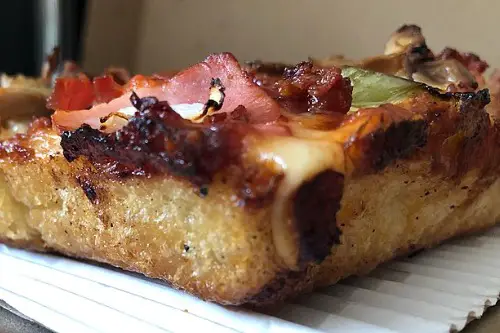
Detroit-style pizza is a thick, square pie with a crispy, cheesy crust that locals proudly say is unlike any other pizza in America. Baked in a special rectangular pan, the crust gets caramelized edges that add a unique crunch. The pizza is traditionally topped with brick cheese and layered with toppings under the sauce, which is applied in strips. Detroiters fiercely defend their pizza as an underdog gem of American pizza styles.
This pizza style has roots in the city’s automotive history, reflecting Detroit’s hardworking spirit and practicality. Locals argue that the crispy edges and airy crust texture are what make it special. Detroit-style is more than just a meal; it’s a point of local pride and identity in a city known for resilience. When people discover it, they often become lifelong fans.
10. Southern Biscuits and Gravy

For many Southerners, biscuits and gravy is the ultimate comfort breakfast, a dish wrapped in nostalgia and family tradition. The flaky, buttery biscuits paired with creamy, sausage-filled white gravy are a must-have on weekend mornings. Locals take the recipe seriously—too thin, too thick, or too salty gravy can spark a debate. It’s a humble dish, but one that carries a lot of emotional weight in Southern kitchens.
Biscuits and gravy represent Southern hospitality and a slower, homey way of life. For many, it’s more than food—it’s Sunday mornings at grandma’s house and stories shared over plates of comfort. The dish’s popularity spreads beyond the region, but true Southerners know the difference between the real deal and an imitation. This breakfast staple is defended like a treasured family heirloom.
11. Louisiana Po’ Boy
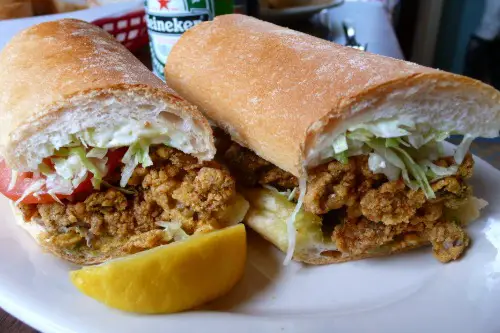
The Po’ Boy sandwich is a New Orleans classic that locals argue about down to the bread and fillings. Traditionally served on crusty French bread, a po’ boy is piled high with fried seafood, roast beef, or even debris (slow-cooked meat bits). Locals insist the bread must be fresh and light enough to soak up juices without falling apart. To New Orleanians, the po’ boy is a street food treasure linked to their city’s rich, diverse food culture.
The sandwich originated as a working-class meal, which adds to its charm and local reverence. Each po’ boy shop claims to have perfected the balance of crisp seafood and fluffy bread. Eating a po’ boy in New Orleans is not just about hunger—it’s a celebration of heritage and local flavor. This sandwich carries the soul of the city in every bite.
12. St. Louis Toasted Ravioli
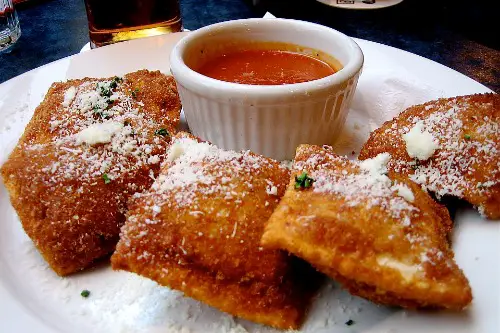
In St. Louis, toasted ravioli is a beloved appetizer, and locals are fiercely proud of this crispy, fried twist on traditional Italian ravioli. The ravioli are breaded, deep-fried, and usually served with marinara sauce, making them an addictive starter or snack. Locals say toasted ravioli was invented right in their city, and the debate over the best spot is lively. It’s a unique regional comfort food that defines St. Louis casual dining.
This snack perfectly captures St. Louis’s creative spirit—taking a classic Italian dish and putting a crunchy spin on it. Toasted ravioli is a must-try for visitors, but for locals, it’s a nostalgic flavor that recalls family dinners and casual nights out. The dish’s simplicity and crispiness make it a shared pride and a common conversation starter. St. Louisans take their toasted ravioli very seriously.
13. Chicago-Style Deep Dish Pizza
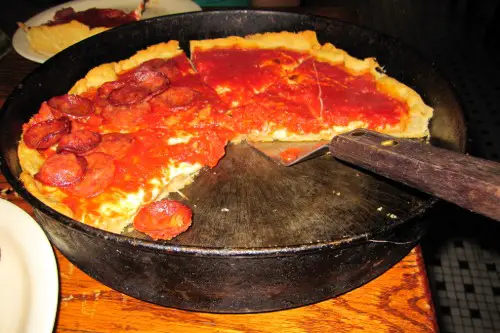
If you’ve ever been to Chicago, you know the debate around pizza runs deep—literally. Chicago-style deep dish is a buttery, thick-crust pie loaded with cheese, chunky tomato sauce, and various toppings layered in reverse order from traditional pizzas. Locals swear it’s the only way to truly enjoy pizza, and outsiders either love it or don’t get the hype. This pizza isn’t just food; it’s an iconic symbol of the city’s hearty, no-nonsense personality.
Every pizzeria claims to have the original recipe, making it almost a sacred tradition to defend your favorite spot’s version. The deep dish represents Chicago’s history of blue-collar pride and indulgence, perfect after a long day of wind and work. You’ll hear residents say it’s not just pizza—it’s an experience, best eaten with friends and a cold beer. To many, trying a Chicago deep dish elsewhere just doesn’t cut it.
14. Hawaiian Plate Lunch
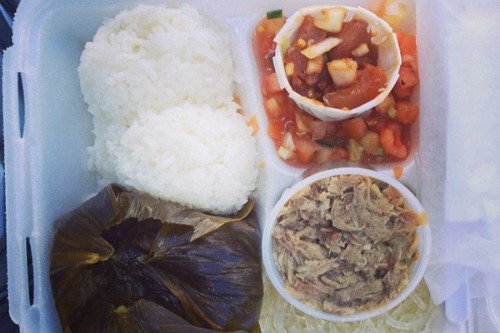
Hawaii’s plate lunch is a cultural melting pot on a tray, reflecting the islands’ diverse heritage with rice, macaroni salad, and a protein like teriyaki chicken or kalua pork. Locals defend the plate lunch as a true representation of Hawaii’s unique blend of Asian, Polynesian, and American flavors. It’s simple, filling, and deeply satisfying—perfect for fueling a day in paradise. To Hawaiians, it’s a culinary tradition that tells their multicultural story.
The plate lunch’s combination might look basic, but it’s packed with history and local pride. Every family or restaurant has their own variation, and debates about the best place to get one are common. It’s food that brings people together and celebrates island life in every bite. The plate lunch is a beloved, everyday treasure in Hawaii.
15. Maryland Crab Cakes
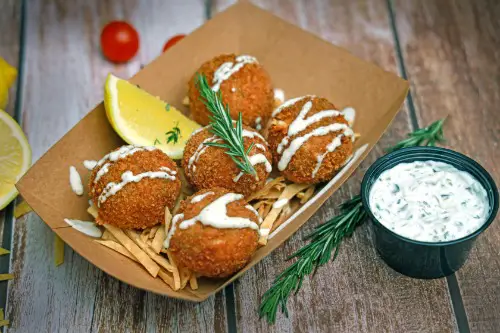
In Maryland, crab cakes are treated almost like a state symbol, with locals insisting on fresh, lump blue crab meat and just the right balance of seasoning. The crab cakes are often lightly breaded or sometimes even crustless, allowing the crab flavor to shine front and center. Defending the “right way” to make them can spark lively conversations among Chesapeake Bay residents. For many, Maryland crab cakes are the gold standard of seafood dishes.
They represent the region’s connection to the Chesapeake Bay and its fishing traditions. Marylanders believe the secret lies in quality crab and minimal fillers—no heavy breading or overpowering spices allowed. Crab cakes are served at celebrations, family gatherings, and restaurants, a true taste of local pride. Eating one is almost like tasting Maryland’s coastal heritage on a plate.
This post 15 Regional Foods That Locals Defend Like They’re National Treasures was first published on American Charm.


